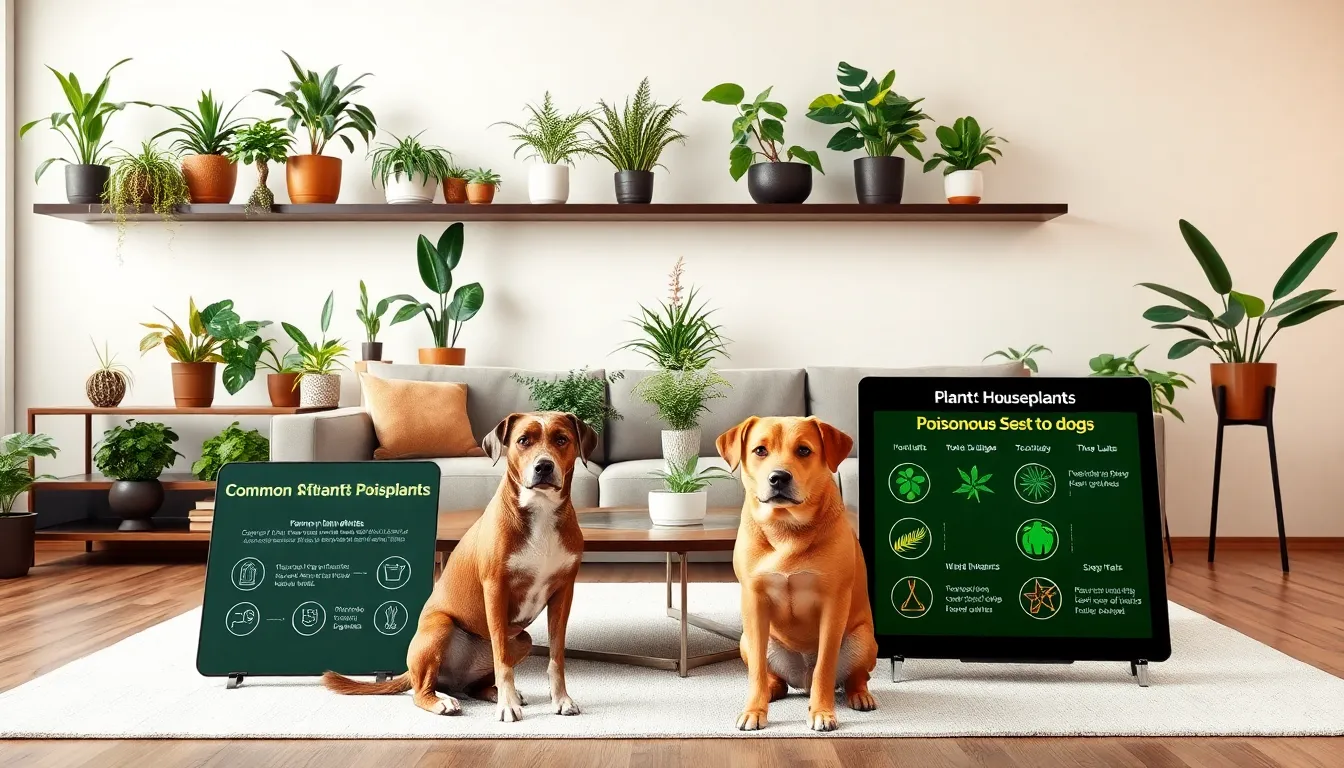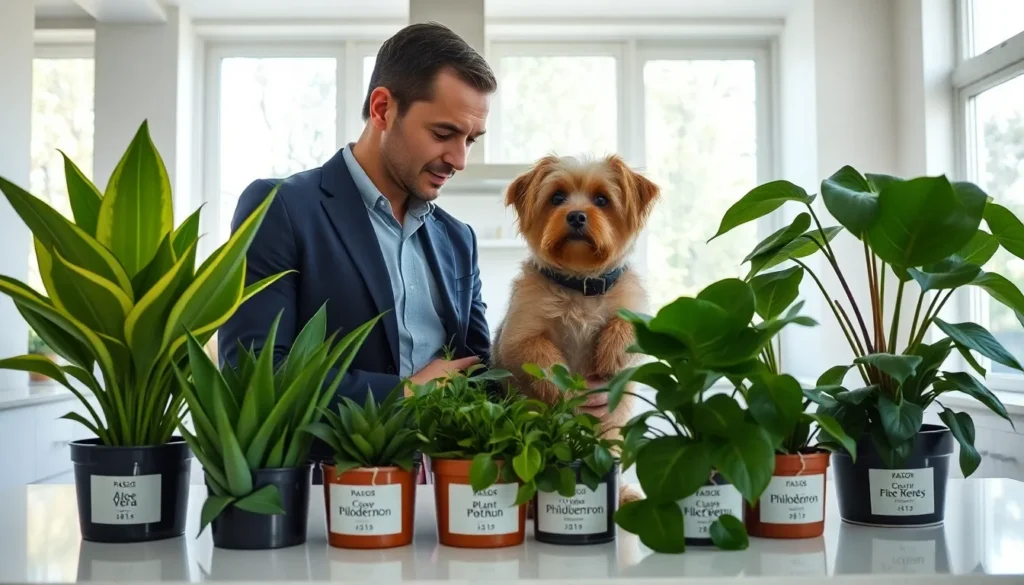If you’ve ever found yourself wondering whether your beloved houseplants are secretly plotting against your furry friends, you’re not alone. Many pet owners live in a constant battle between the beauty of greenery and the safety of their roving canines. The last thing anyone wants is to discover that their lovely monstera is actually a menace. From toxic leaves to dangerous blooms, understanding which houseplants are poisonous to dogs can keep tails wagging and plants thriving. Let’s dig into the leafy world that could be a hidden threat for your four-legged companions.
Table of Contents
ToggleUnderstanding Plant Toxicity

When it comes to pets, particularly dogs, plant toxicity is a serious concern. Not all plants will pose a risk, but a fair number can cause distressing symptoms when ingested.
Toxicity generally refers to the harmful substances some plants produce, which can lead to a variety of health issues. The severity of these symptoms can vary, from mild irritations to potentially life-threatening conditions. Certain plant families, like the lily family or the nightshade family, are notorious for being harmful to dogs. But, even popular houseplants can hide dangerous properties. Hence, pet owners must stay informed about which plants could be harmful. For instance, some common household favorites might not be on the tip of your tongue when you think of toxic greenery.
Common Poisonous House Plants
Several houseplants are known to pose a risk to dogs. Here’s a closer look at some of the most common culprits:
1. Aloe Vera
While it’s often praised for its healing properties for humans, aloe can cause nausea, vomiting, and even diarrhea in dogs. So, save your pet from discomfort and consider keeping this succulent out of reach.
2. Philodendron
A widely popular houseplant, philodendrons can lead to irritation in a dog’s mouth and throat. Symptoms may include pawing at their mouth, drooling, and even swallowing difficulties.
3. English Ivy
Charming and trailing, English ivy can actually be a hazard. If ingested, it can result in vomiting, abdominal pain, and lethargy. It’s a shame this beauty can be a once green star in your home.
4. Pothos (Devil’s Ivy)
This plant may be a favorite for its easy care, but it’s not a friend to dogs. Symptoms can include irritation, vomiting, and swelling in the mouth and throat.
5. Sago Palm
Considered one of the most toxic houseplants, it can lead to liver failure in dogs. If a dog eats any part of this plant, immediate medical attention is crucial.
Signs of Poisoning in Dogs
Recognizing the symptoms of plant poisoning is key for any dog owner. If a dog has ingested a toxic plant, the following signs may appear:
- Vomiting: A classic indicator that something is amiss.
- Diarrhea: Often coupled with nausea, this can lead to dehydration.
- Drooling: Excess salivation can be a sign of mouth or throat irritation.
- Lethargy: If a dog is unusually tired or uninterested in play, it may be suffering from the effects of poisoning.
- Loss of Appetite: A sudden refusal to eat could signal distress.
- Difficulty Breathing: If a dog shows signs of distress while breathing, it’s imperative to seek help right away.
Dog owners should monitor their pets closely, especially if the dog has access to houseplants. Early detection is critical.
Preventing Dog Poisoning
To safeguard your beloved pet from the dangers lurking in houseplants, consider the following prevention tips:
- Choose Pet-Safe Plants: Before purchasing new plants, conduct thorough research on their safety for dogs. Some examples include spider plants, Boston ferns, and bamboo palms.
- Elevate Dangerous Plants: If you must keep toxic plants, elevate them to a spot that is inaccessible to your furry friend.
- Educate Yourself and Others: Share knowledge about toxic plants with family and friends to ensure everyone is on the same page.
- Regularly Inspect Your Space: Make it a habit to monitor plants and their condition, as a wilting or dying plant may attract a dog’s curiosity.
- Create a Barrier: Using gates or designated areas can help protect your plants from inquisitive noses.
What To Do If Your Dog Ingests A Toxic Plant
If a dog has ingested a potentially toxic plant, swift action is essential. Here’s a step-by-step guide:
- Stay Calm: Panicking won’t help either of you. Take a deep breath.
- Assess the Situation: Determine what your dog ate and how much. If you have the plant on hand, note its details to share with your veterinarian.
- Contact Your Vet: Call your veterinarian or an emergency animal clinic immediately. Provide them with all the necessary details. They may ask you to bring your dog in for treatment.
- Follow Instructions: Listen carefully to your vet’s guidance: they may recommend inducing vomiting or bringing your dog in for a check-up.
- Monitor Symptoms: Keep an eye on any symptoms your dog may exhibit during your vet’s recommendations. Make note of any changes to report.



